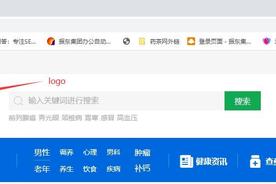In today's digital age, having a well-crafted website is no longer optional for companies—it's a necessity. However, understanding the intricacies of website production and optimization can be a daunting task. In this comprehensive guide, we will explore the key components of website production and optimization, providing businesses with the knowledge they need to create and maintain a successful online presence.
1、Planning and Design
The first step in website production is planning and design. This involves defining the purpose of the website, identifying the target audience, and creating a user-friendly layout. It's essential to consider the aesthetic appeal and functionality of the site, as both play a crucial role in keeping visitors engaged and ensuring a positive user experience.
2、Content Development
Content is the backbone of any website. High-quality, relevant content not only helps search engines understand what your website is about but also keeps visitors informed and engaged. Ensure your content is well-written, accurate, and optimized for both users and search engines by incorporating relevant keywords and phrases.
3、Technical Implementation
Once the design and content are in place, it's time to focus on the technical aspects of website production. This includes choosing a reliable web hosting service, implementing Responsive design for mobile devices, and ensuring fast load times. Additionally, proper coding practices should be followed to ensure the website is compatible with various browsers and devices.

4、Search Engine Optimization (SEO)
Optimizing your website for search engines is crucial for improving visibility and attracting more traffic. This involves conducting keyword research, optimizing page titles and meta descriptions, creating high-quality backlinks, and ensuring proper use of header tags and alt tags. Regularly updating your website with fresh content and monitoring your site's performance using tools like Google Analytics can help you stay on top of your SEO efforts.
5、User Experience (UX)
A great website should be easy to navigate, visually appealing, and provide valuable information to its visitors. Focus on creating an intuitive navigation structure, minimizing the number of clicks required to access information, and using clear calls-to-action. Additionally, ensure that your website is accessible to all users, including those with disabilities, by following web accessibility guidelines.
6、Mobile Optimization
With more people accessing the internet via mobile devices, it's essential to optimize your website for mobile users. This involves creating a responsive design that adapts to different screen sizes, ensuring fast load times, and optimizing touchpoints for easy navigation on touchscreens.
7、Social Media Integration
Integrating your website with social media platforms can help increase your online presence and drive traffic to your site. Share your content on social media channels, encourage user-generated content, and include social sharing buttons on your website to make it easy for visitors to share your content with their network.
8、Analytics and Conversion Rate Optimization (CRO)
Tracking your website's performance is essential for understanding how visitors interact with your site and identifying areas for improvement. Use analytics tools to monitor traffic sources, bounce rates, and conversion rates. Continuously testing different elements of your website, such as headlines, images, and calls-to-action, can help improve your overall CRO strategy.
9、Security and Maintenance
Ensuring your website is secure from cyber threats and maintaining its performance is crucial for maintaining a positive user experience. Regularly update your website's software, implement security measures like SSL certificates, and monitor your site for potential issues to prevent downtime and data breaches.
10、Staying Up-to-Date with Industry Standards
The world of website production and optimization is constantly evolving. To stay ahead of the competition, it's essential to stay up-to-date with the latest industry standards, trends, and best practices. Attend conferences, read blogs, and participate in online forums to stay informed and continue improving your website's performance.
By understanding the key components of website production and optimization, businesses can create a strong online presence that engages visitors, improves visibility, and drives traffic. With a focus on planning, design, content development, technical implementation, SEO, UX, mobile optimization, social media integration, analytics, security, and maintenance, companies can navigate the intersection of website production and optimization with confidence.
评论列表 (0条)